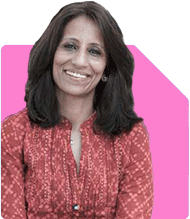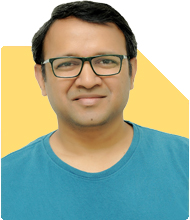28-Year-Old with Aging Parents: Can I Retire at 40-45?
Ramalingam Kalirajan |10894 Answers |Ask -Follow
Mutual Funds, Financial Planning Expert - Answered on Aug 08, 2024
He has an MBA in finance from the University of Madras and is a certified financial planner.
He is the director and chief financial planner at Holistic Investment, a Chennai-based firm that offers financial planning and wealth management advice.... more

Hi. I’m 28, single and taking care of my aging parents. My take home is about 1.7L per month. My current investment are as following: Stocks: 4L, MF: 12L, Liquid Funds for emergency: 5L, US Stocks: 4L, NPS: 3L, PPF: 6.5L, EPF: 9.5L, Cash: 3.5L, Real Estate: 15L I invest about 25k to MF SIP monthly, 12k to PPF. Moreover, I will get ~15L per year in stocks after tax from my current company as RSUs. Last year, I have taken a home loan of 60L for 30 years to build a duplex at my hometown, EMI is around 45k per month. I’ve bought term insurance of 2cr and have 10L of health insurance for myself and parents from my company. Having major medical expenses for my ailing dad since last year, as insurance doesn’t cover all expenses. I want to retire as early as possible. Can you please help me suggest detailed retirement planning around the age of 40-45. Lastly, shall I payoff my home loan amount early with my RSU money? Or keep investing that lump sum amount rather than closing the home loan earlier? Thanks in anticipation.
At 28, you have a good salary of Rs 1.7L per month. Your investments are well-diversified. Here's a summary:
Stocks: Rs 4L
Mutual Funds: Rs 12L
Liquid Funds: Rs 5L
US Stocks: Rs 4L
NPS: Rs 3L
PPF: Rs 6.5L
EPF: Rs 9.5L
Cash: Rs 3.5L
Real Estate: Rs 15L
You have a home loan of Rs 60L with an EMI of Rs 45,000. You invest Rs 25,000 monthly in mutual funds and Rs 12,000 in PPF. Your company grants you RSUs worth about Rs 15L per year post-tax.
Your insurance coverage includes a Rs 2 crore term plan and a Rs 10L health insurance from your company for you and your parents. You are incurring significant medical expenses for your father.
Financial Goals and Retirement Planning
You want to retire between 40 and 45. Early retirement needs careful planning and disciplined saving. Here are detailed steps:
1. Prioritize Emergency Fund
Enhance Emergency Fund: Your current emergency fund is Rs 5L. Aim for at least 6-12 months of expenses.
Medical Contingency Fund: Given your father's medical needs, set aside additional funds specifically for medical emergencies.
2. Review Insurance Coverage
Health Insurance: Your current coverage is Rs 10L. Consider a top-up health insurance plan. It covers expenses that your current policy might not.
Term Insurance: Ensure your Rs 2 crore term insurance is sufficient. Factor in liabilities like your home loan and future family needs.
3. Home Loan Management
Assess Early Repayment: Your RSUs worth Rs 15L per year can be used to pay off your home loan. Consider the interest rate on your loan versus potential investment returns.
Balance Investments and Debt: If your investment returns are higher than your loan interest, continue investing. Otherwise, prioritize loan repayment.
4. Optimize Investments
Mutual Funds: Continue your SIPs of Rs 25,000 monthly. Consider increasing the SIP amount gradually.
Diversification: Ensure your mutual fund portfolio includes a mix of large-cap, mid-cap, and small-cap funds. This reduces risk.
Avoid Index Funds: Index funds have lower returns compared to actively managed funds. Stick to actively managed funds for better performance.
5. Future RSU Strategy
RSU Utilization: Use your annual RSU proceeds wisely. Allocate a portion towards your home loan and the rest towards diversified investments.
Tax Efficiency: Plan your RSU sales to minimize tax liability. Consult a tax advisor for optimized tax strategies.
6. Long-Term Investments
PPF and NPS: Continue your contributions to PPF and NPS. They offer tax benefits and secure returns.
Equity Exposure: Maintain a healthy exposure to equities. They provide higher returns over the long term.
Direct Funds: Avoid direct mutual funds. Invest through a Certified Financial Planner (CFP) for expert advice and better fund management.
7. Retirement Corpus Calculation
Estimate Retirement Needs: Calculate your expected monthly expenses post-retirement. Factor in inflation and lifestyle changes.
Corpus Requirement: Aim to build a retirement corpus that can generate enough monthly income. Typically, this could be 20-25 times your annual expenses.
Investment Strategy: Post-retirement, shift to a mix of conservative and moderate risk investments. Consider balanced funds and debt funds for steady income.
8. Additional Income Streams
Rental Income: If your real estate can generate rental income, factor this into your retirement planning.
Side Income: Explore side income opportunities that can supplement your savings.
9. Continuous Review and Adjustment
Regular Review: Review your financial plan annually. Adjust based on changes in income, expenses, and financial goals.
Consult a CFP: Work with a Certified Financial Planner for ongoing advice. They help optimize your portfolio and ensure you're on track to meet your goals.
Final Insights
You are on a good path with your diversified investments and insurance coverages. Focus on enhancing your emergency fund, optimizing investments, and strategically managing your home loan and RSUs. Regular reviews and adjustments will ensure you stay on track for early retirement. Consulting a Certified Financial Planner will provide expert guidance to achieve your financial goals efficiently.
Best Regards,
K. Ramalingam, MBA, CFP,
Chief Financial Planner,
www.holisticinvestment.in
You may like to see similar questions and answers below
Ramalingam Kalirajan |10894 Answers |Ask -Follow
Mutual Funds, Financial Planning Expert - Answered on May 28, 2024
Ramalingam Kalirajan |10894 Answers |Ask -Follow
Mutual Funds, Financial Planning Expert - Answered on Dec 27, 2024
Ramalingam Kalirajan |10894 Answers |Ask -Follow
Mutual Funds, Financial Planning Expert - Answered on May 15, 2025
Radheshyam Zanwar |6747 Answers |Ask -Follow
MHT-CET, IIT-JEE, NEET-UG Expert - Answered on Dec 16, 2025
Shalini Singh |181 Answers |Ask -Follow
Dating Coach - Answered on Dec 16, 2025
Patrick Dsouza |1429 Answers |Ask -Follow
CAT, XAT, CMAT, CET Expert - Answered on Dec 16, 2025
Nayagam P P |10858 Answers |Ask -Follow
Career Counsellor - Answered on Dec 16, 2025
Nayagam P P |10858 Answers |Ask -Follow
Career Counsellor - Answered on Dec 16, 2025
Samraat Jadhav |2510 Answers |Ask -Follow
Stock Market Expert - Answered on Dec 16, 2025
Samraat Jadhav |2510 Answers |Ask -Follow
Stock Market Expert - Answered on Dec 16, 2025
Nayagam P P |10858 Answers |Ask -Follow
Career Counsellor - Answered on Dec 16, 2025
Nayagam P P |10858 Answers |Ask -Follow
Career Counsellor - Answered on Dec 16, 2025
Ramalingam Kalirajan |10894 Answers |Ask -Follow
Mutual Funds, Financial Planning Expert - Answered on Dec 16, 2025

























